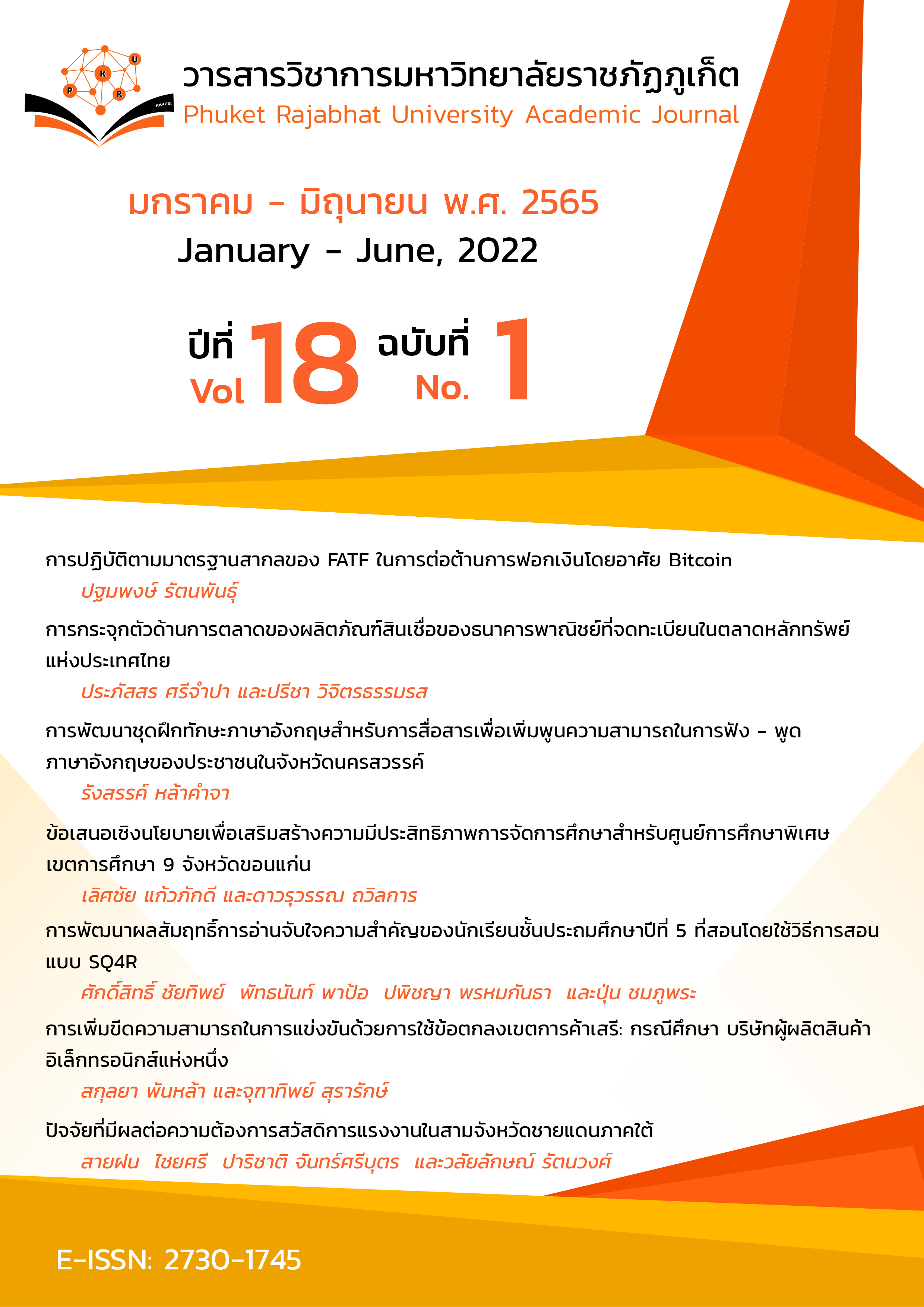Market Concentration on Credit of Commercial Bank that Enroll in SET
Main Article Content
Abstract
The objective of this research was to analyze the concentration and competitiveness of credit. and to study the conformity of the index to be used to measure the competitive conditions of commercial banks listed on the Stock Exchange of Thailand. By using secondary data from the annual report of 11 commercial banks listed on the SET during 2010 – 2019. The credit concentration of commercial banks was analyzed by the method of measuring the Concentration Ratio(CR), Herfindahl-Hirschman Index (HHI), The Comprehensive Concentration Index(CCI). By using credit information, it can be divided into total net loan and credit classified by business type, categorized into they are divided into agricultural and mining loans, manufacturing and commercial loans, real estate and construction loans, utilities and services loans and housing loans. And study the correlation between the index used to measure the competitiveness of commercial banks using the Spearman rank correlation coefficient
The results of this research revealed that total net credit and credit classified by 5 types of businesses based on the Concentration Ratio (CR), Herfindahl-Hirschman Index (HHI) and Comprehensive Concentration Index (CCI). The overall index was moderately concentrated and has a market structure like an oligopoly. The correlation between all indices showed a relatively high positive correlation with a statistically significant of 0.01 by real estate and construction loans. Utilities and Services Loans and home loans have the corresponding measurement criteria for each index. Thus, each index can be used interchangeably. But the other three types of loans have inconsistent metrics for each index. Therefore, each index cannot be used interchangeably.
Article Details

This work is licensed under a Creative Commons Attribution-NonCommercial-NoDerivatives 4.0 International License.
The content and information published in the Phuket Rajabhat University Academic Journal represent the opinions and sole responsibility of the authors. The editorial board does not necessarily endorse or share any responsibility for these view.
Articles, data, content, images, etc., published in the Phuket Rajabhat University Academic Journal are the copyright of the Phuket Rajabhat University Academic Journal. Any individual or organization wishing to reproduce or utilize all or part of this material for any purpose must obtain prior written permission from the Phuket Rajabhat University Academic Journal.
References
Auipaiboonsawat, S. (2010). Microeconomics1. Ramkhamhaeng University Press.
Chaisongkram, K., Wongkhrua, C., Ariya, A., Kamrach, C. & Yongpaknam, P. (2020). The Analysis of the Relationship Between Financial Factors and Industrial Concentration of Commercial Banks in Thailand. Journal of Accountancy and Management, Mahasarakham Business School, Mahasarakham University, 12(2), 54-70.
Fiscal Policy Office. (2010). Regulatory Policy for Competition Development in Thailand Financial Business. Fiscal Policy Office.
J.A. Bikker & K. Haaf. (2000). Measures of competition and concentration in the banking Industry: a review of the literature. journal of the European Economics and Financial, 9(2), 53-98.
Rimwittayakorn, W. (2015). Microeconomics Theory. Faculty of Economics Ramkhamhaeng University.
Saikhanit, R. (2008). Economics for Management. Faculty of Economics, Chulalongkorn University.
Satyarakit, W. (1999). Industrial Economics: Analytical Instruments. Academic Document Promotion Project, NIDA.
SET. Sector Quotation : BANK. Retrived April 5, 2021, from https://marketdata.set.or.th
Somtha, A. (2010). Market Structure and Factors Related to Loans Granted by Commercial Thai Bank. Srinakharinwirot University.

